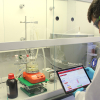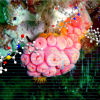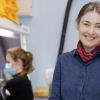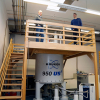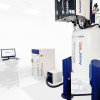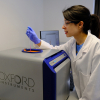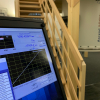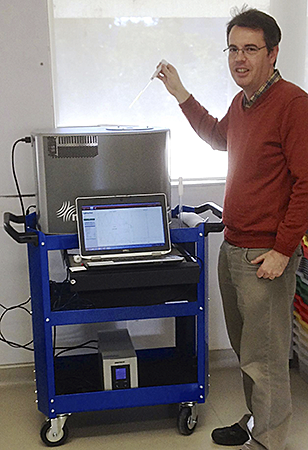
Dr Philip Sharpe is a teaching-focused academic in the School of Chemistry & Molecular Biosciences at the University of Queensland, Australia. His active research interests are in the field of chemistry education research, particularly student learning within the laboratory environment. As the academic in charge of the first year chemistry laboratory, Dr Sharpe is making analytical techniques available to young undergraduates whereas previous students may have had to rely on theory lessons and to use data generated at remote laboratories rather than by the students themselves in the same lab where they may have synthesised their product.
Dr Sharpe has come up with a novel idea. He has his Spinsolve on a trolley which enables him to go from the second floor first year labs up to the fourth floor Advanced Teaching Laboratory and the fifth floor laboratory for second and third year students. This is possible because of the Spinsolve’s size, the fact that it does not need cryogens and requires just a single power socket. The students really feel they can now embrace NMR as a usable technique rather than another mystical tale from the chemistry text books.
Commenting about Spinsolve, Dr Sharpe sees many advantages in both teaching and research. “Students used to miss the link from theory to practical use. Now my groups can have a hands-on experience and understand the value of NMR to the synthetic chemist. My second semester first-year students are taken through the basics of using Spinsolve. They make a product (paracetamol); run it on the NMR; acquire and process the data. Some of our more high achieving undergraduate students go a stage further with a six-week research project where they are introduced to spectroscopy—IR, NMR and GC-MS. Each student is allowed to choose their own project. For example, it could to study different reactions of benzaldehyde. They will analyse the products they synthesise to look at variations in substitution products. They are taught to use multiple techniques to confirm what they have made and the Spinsolve NMR machine is key to achieving this.”



